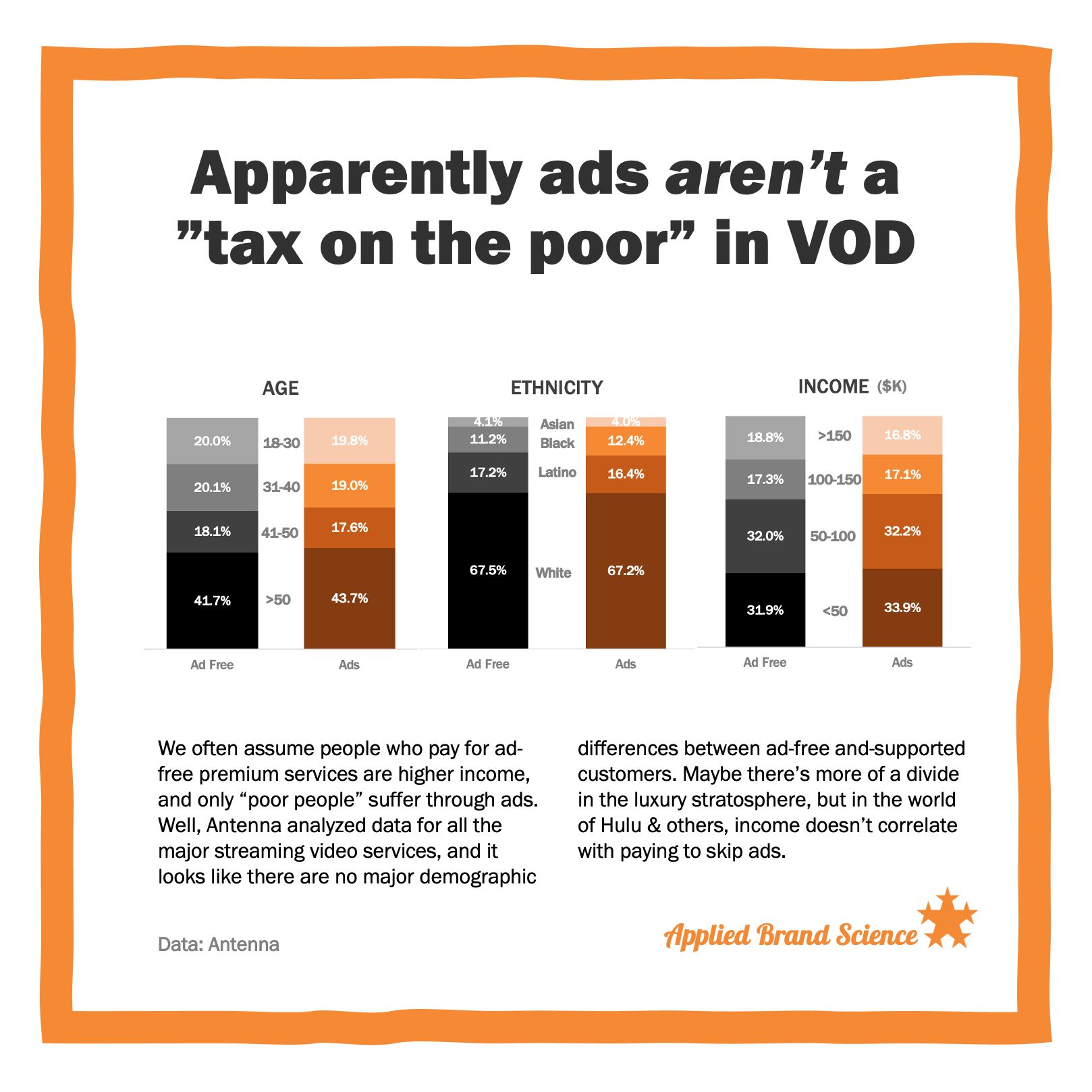Is Advertising a “Tax on the Poor”?
In other words, do wealthier people regularly pay for premium services that let them skip ads, while lower-income households ”pay” via watching ads?
Lucky for us, Antenna crunched the numbers for several streaming services that offer both ad-supported and premium ad-free options, including Discovery+, HBO Max, Hulu, Paramount+ and Peacock. The data isn’t exhaustive, and it’s US-only. But their findings were compelling.
From how they see it, there are no significant demographic differences between premium ad-free subscribers and ad-supported ones. Not age, not ethnicity, and not income.
In other words, both rich & poor pay to avoid ads in equal numbers — and also “suffer through ads” equally too.
There were minor skews in gender and age: women and people over 50 were sliiiiightly more likely to sit through ads.
But the headline seems to hold.
WHY?
My theory? Well, if you’ve ever shopped for groceries with a friend, you’ve probably seen that their deal-seeking is often very category-dependent, capricious, and somewhat disconnected from their level of wealth. Rich people can be stingy about strawberries, and broke people can splurge on salumi. We’re complex.
Obviously there are big subsegments (or ‘partitions in the market’) between luxury tiers and budget tiers, especially for more expensive items like homes, cars, yachts, and vacations.
But it’s always good to check our assumptions about who our customers really are.
Caveats galore, of course. But read the whole thing:
https://www.antenna.live/post/ad-tier-demographics

